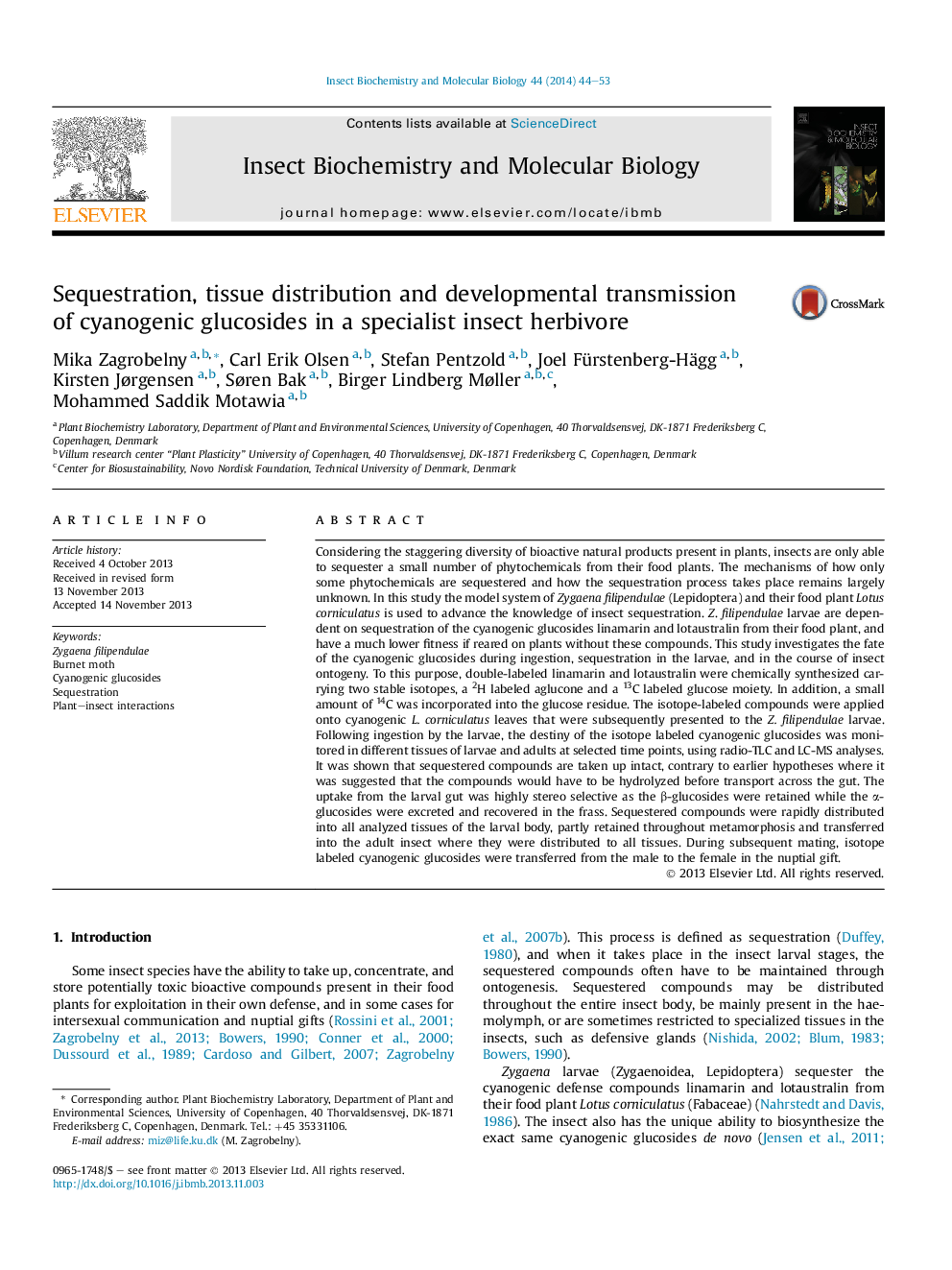| کد مقاله | کد نشریه | سال انتشار | مقاله انگلیسی | نسخه تمام متن |
|---|---|---|---|---|
| 1982104 | 1539508 | 2014 | 10 صفحه PDF | دانلود رایگان |
• Sequestered cyanogenic glucosides are taken up intact by Zygaena filipendulae larvae.
• Uptake is specific to β-glucosides.
• Sequestered cyanogenic glucosides are quickly distributed to all larval tissues.
• Sequestered cyanogenic glucosides are passed from the male to the female during mating.
Considering the staggering diversity of bioactive natural products present in plants, insects are only able to sequester a small number of phytochemicals from their food plants. The mechanisms of how only some phytochemicals are sequestered and how the sequestration process takes place remains largely unknown. In this study the model system of Zygaena filipendulae (Lepidoptera) and their food plant Lotus corniculatus is used to advance the knowledge of insect sequestration. Z. filipendulae larvae are dependent on sequestration of the cyanogenic glucosides linamarin and lotaustralin from their food plant, and have a much lower fitness if reared on plants without these compounds. This study investigates the fate of the cyanogenic glucosides during ingestion, sequestration in the larvae, and in the course of insect ontogeny. To this purpose, double-labeled linamarin and lotaustralin were chemically synthesized carrying two stable isotopes, a 2H labeled aglucone and a 13C labeled glucose moiety. In addition, a small amount of 14C was incorporated into the glucose residue. The isotope-labeled compounds were applied onto cyanogenic L. corniculatus leaves that were subsequently presented to the Z. filipendulae larvae. Following ingestion by the larvae, the destiny of the isotope labeled cyanogenic glucosides was monitored in different tissues of larvae and adults at selected time points, using radio-TLC and LC-MS analyses. It was shown that sequestered compounds are taken up intact, contrary to earlier hypotheses where it was suggested that the compounds would have to be hydrolyzed before transport across the gut. The uptake from the larval gut was highly stereo selective as the β-glucosides were retained while the α-glucosides were excreted and recovered in the frass. Sequestered compounds were rapidly distributed into all analyzed tissues of the larval body, partly retained throughout metamorphosis and transferred into the adult insect where they were distributed to all tissues. During subsequent mating, isotope labeled cyanogenic glucosides were transferred from the male to the female in the nuptial gift.
Figure optionsDownload high-quality image (190 K)Download as PowerPoint slide
Journal: Insect Biochemistry and Molecular Biology - Volume 44, January 2014, Pages 44–53
